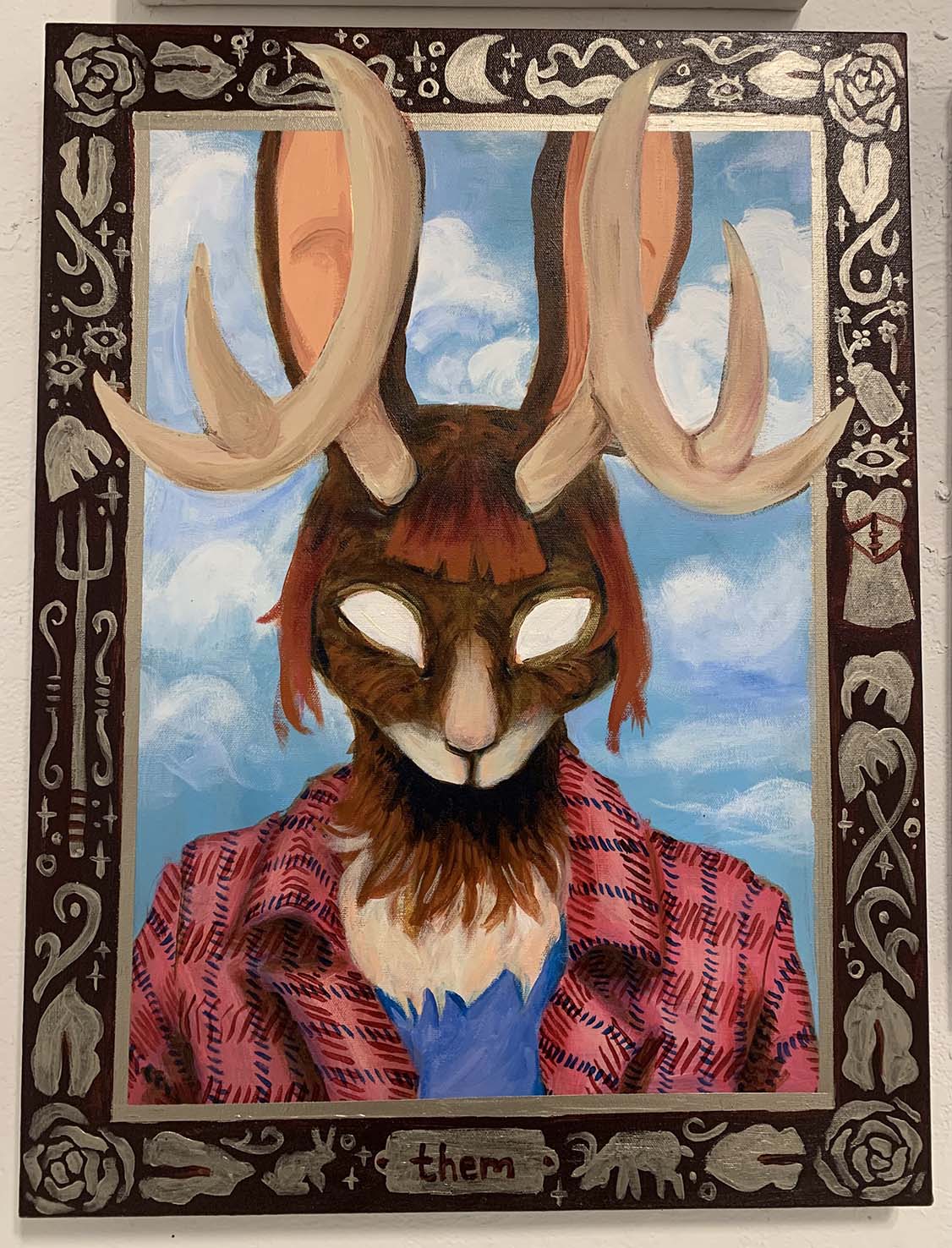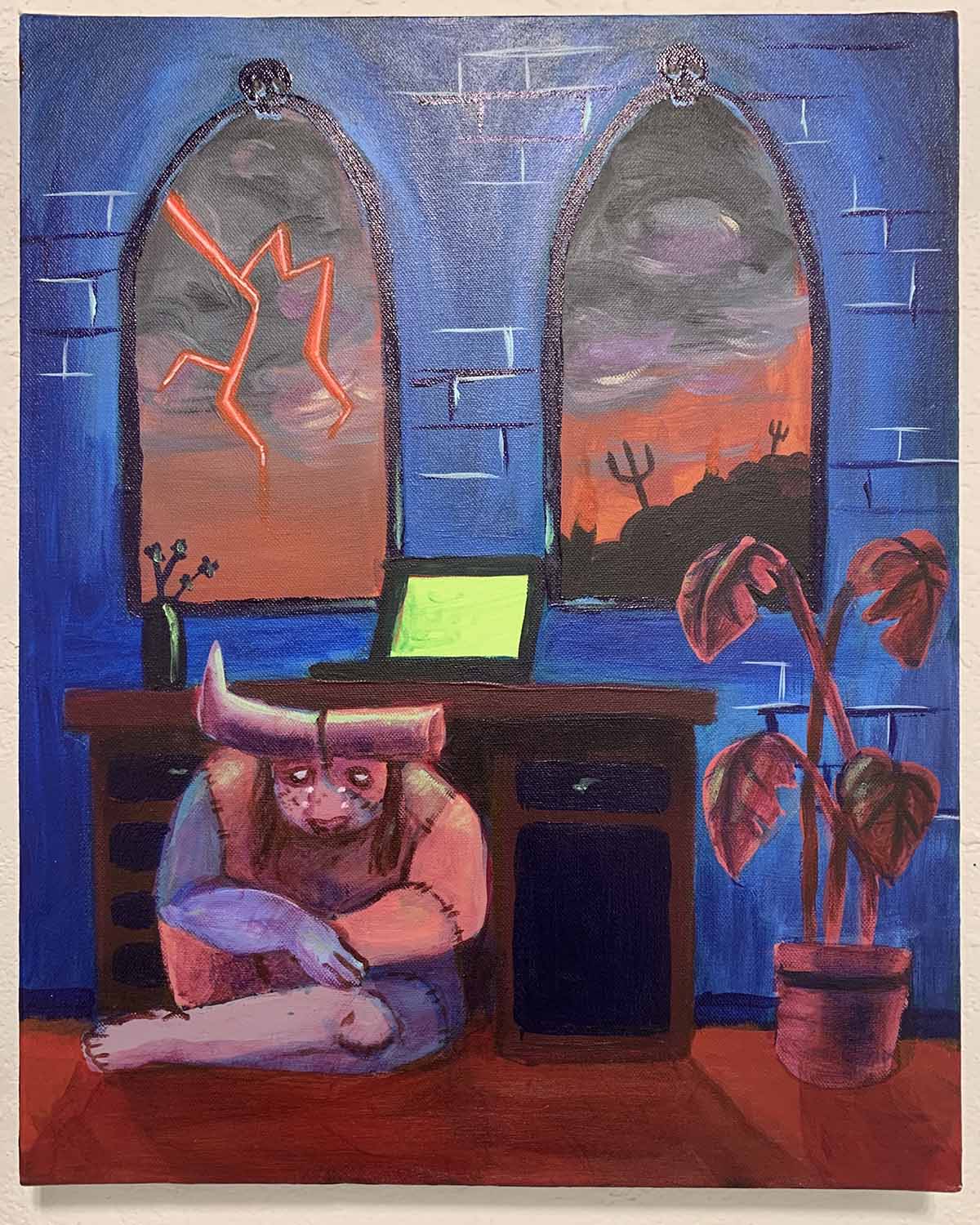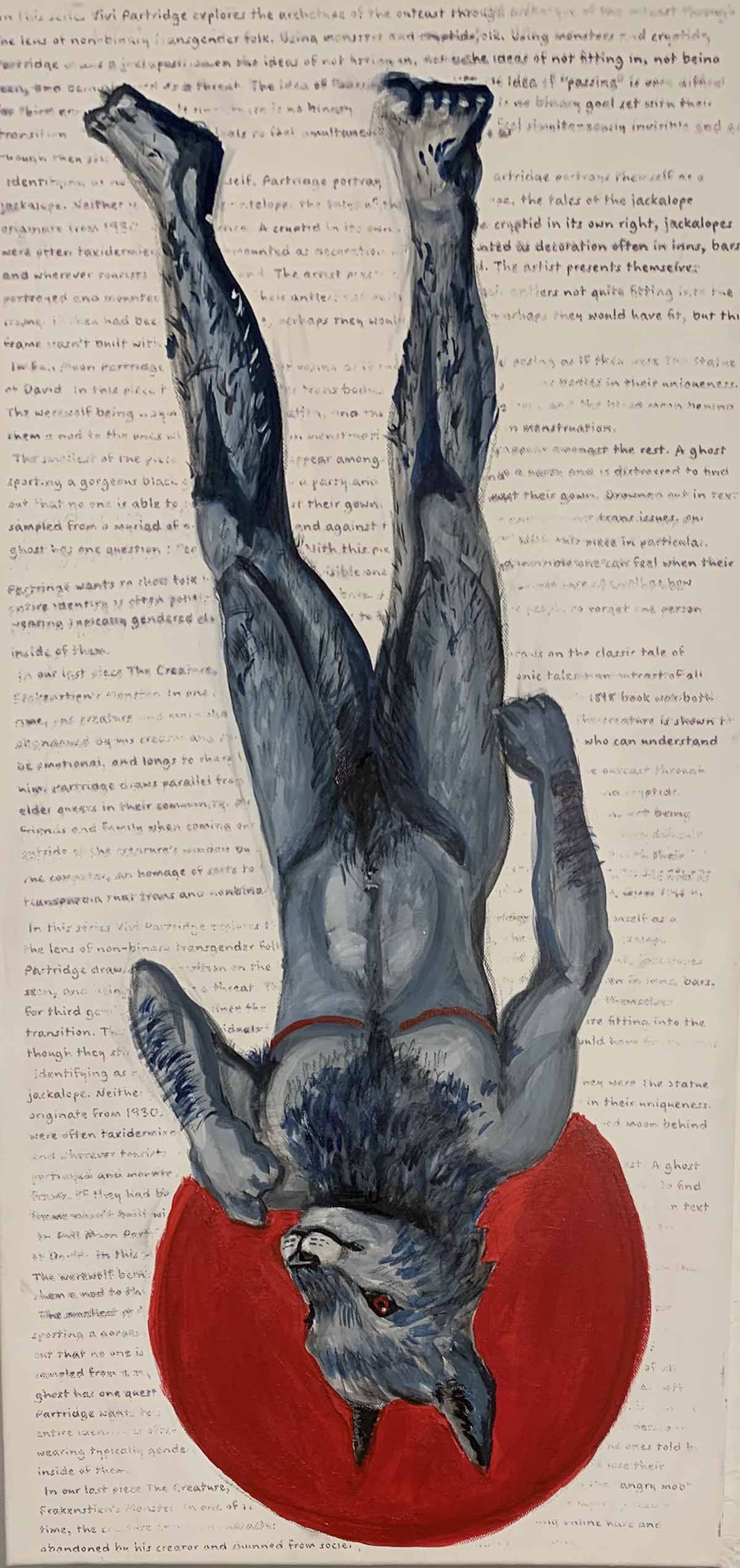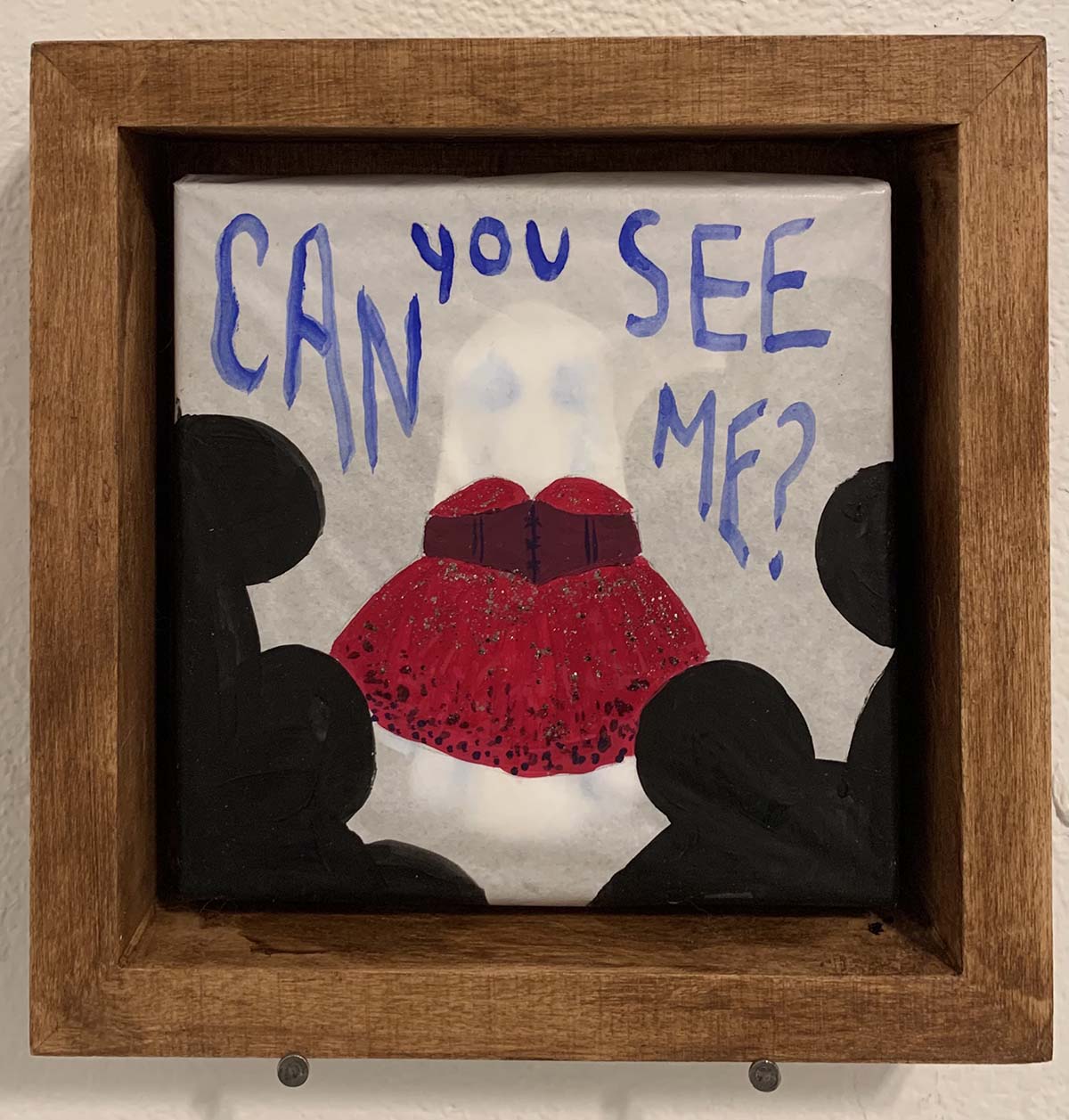Artist Statement
In this series Vivi Partridge explores the archetype of the outcast through the lens of non-binary transgender folk. Using monsters and cryptids, Partridge draws a juxtaposition on the ideas of not fitting in, not being seen, and being framed as a threat. The idea of “passing” is very difficult for third gender individuals since there is no binary goal set with their transition. This can lead individuals to feel simultaneously invisible and as though they stick out.
Identifying as non-binary themself, Partridge portrays themself as a jackalope. Neither jackrabbit nor antelope, the tales of the jackalope originate from 1930s North America. A cryptid in its own right, jackalopes were often taxidermied, sold and mounted as decoration often in inns, bars, and wherever tourists were to be found. The artist presents themselves portrayed and mounted on the wall, their antlers not quite fitting into the frame. If they had been a regular hare, perhaps they would have fit, but this frame wasn’t built with them in mind.
In Full Moon Partridge depicts a werewolf posing as if they were The Statue of David. In this piece the artist celebrates trans bodies in their uniqueness. The werewolf being a symbol of transformation, and the blood moon behind them a nod to the ones who put the ‘men’ in menstruation.
The smallest of the pieces is meant to disappear amongst the rest. A ghost sporting a gorgeous gown shows up to a party and is distressed to find out that no one is able to see anything past their attire. Drowned out in the crowd, our ghost has one question : “can you see me?”. With this piece in particular, Partridge wants to show folk how small and invisible one can feel when their entire identity is often politicized or cause for debate. As well as how wearing typically gendered clothes can cause people to forget the person inside of them.
In our last piece The Creature, Partridge draws on the classic tale of Frakenstien’s Monster. In one of the most iconic tales of an outcast of all time, the creature and main character in Mary Shelly’s 1818 book was both abandoned by his creator and shunned from society. The creature is shown to be emotional, and longs to share his life with someone who can understand him. Partridge draws parallel from the 19th century story to the ones told by elder queers in their community. Many of the time folks would lose their friends and family when coming out. The artist also ties in the “angry mob” outside of the creature’s window by placing it behind the laptop placed on the computer, an homage of sorts to the ever streaming online hate and transphobia that trans and nonbinary folk face in online spaces.




